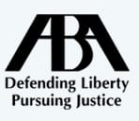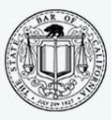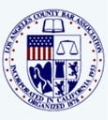Losing a loved one is always a tragedy. Suffering the loss of a family member due to negligence or malice is even more emotionally layered, stirring up anger, grief, and bitterness, along with financial and physical losses. Nothing can make up for this kind of loss, but a Los Angeles wrongful death attorney or accident lawyer can fight for you and your family to receive the compensation you deserve.
After a wrongful death, you’ll want legal support that not only provides the legal knowledge and answers you are seeking but also acts with kindness toward you and your family. At the Mitchell Law Corporation, our core values push us to deliver quality legal services, act with compassion, and provide guidance you can trust. We have more than 25 years of experience helping individuals fight for fair compensation, as well as the case results to prove our dedication.
Over the years, our Los Angeles Wrongful Death Lawyer have fought for families who have lost people dear to them in fatal accidents, helping them claim the monetary compensation they deserve. We have successfully navigated wrongful death litigation and worked to maximize compensation amounts. If you have recently lost someone due to an accident, we at the Mitchell Law Corporation can aggressively advocate for you.
A death is defined as a “wrongful death” when the deceased dies because of the wrongful actions or inaction of another party or entity. The deceased is legally referred to as the decedent, who may die because of negligent or malicious actions. In all wrongful death cases, the following must be present:
Wrongful death can result from a wide range of causes, including accidental and malicious acts. Different parties can be held liable, from manufacturers or companies to single individuals. Common wrongful death cases include:
While less common, wrongful death actions can also include criminal action. Regardless of whether the crime committed was intended to kill, if it resulted in someone’s death, a wrongful death claim could be filed.
Wrongful death and survival actions differ in whose damages they compensate. For example, a survival action may demand compensation for the decedent’s pain and suffering, medical bills, and other losses after the incident. Wrongful death focuses on those the decedent left behind, such as their family. The focus is demanding reparations for the family’s grief, suffering, financial losses, etc.
In some cases, a criminal homicide and a wrongful death case may both be brought to court. If, for example, Mr. X intentionally hits Mr. Y with a truck, Mr. X may be tried both for the homicide and the wrongful death of Mr. Y. The damages collected in a wrongful death case are financial only, whereas a criminal homicide case also determines prison sentences, probation periods, and fines.
Wrongful death cases demand a lower standard of proof compared to criminal homicide cases. A criminal homicide case must be proved beyond a reasonable standard of doubt, whereas wrongful death must provide a preponderance of the evidence. As a result, it’s more likely for a plaintiff to win a wrongful death case than for a criminal homicide case to result in conviction.
Surviving family or dependents of the decedent are allowed to sue for wrongful death in California. The law expands these categories further in the Code of Civil Procedure 377.60. The three general categories mentioned within the code include:
Losing someone you love is always challenging, and it can be difficult to know how to proceed. One of the most important things to do in the wake of your loss is to avoid making basic legal errors while you are grieving and adjusting to life after loss. Common mistakes include:
Legal cases can be complex, and dealing with a wrongful death case in the midst of grieving adds a whole new level of challenge. Families must work together to follow California’s One Action Rule and jointly file a claim. Navigating grief, family dynamics, and the additional complexities of California’s legal system can feel insurmountable without professional legal help.
An experienced Wrongful Death Attorney in Los Angeles, CA can provide a number of services to you and your family, including:
Beginning a wrongful death case in Los Angeles, California requires starting a civil suit. This typically involves filing a petition or complaint and filing a summons so the party being sued is made aware of that fact. Service of process then dictates what paperwork is required, e.g., the complaint and the official summons, and ensures that all parties are given a copy.
Service of process requires that these documents are confirmed as delivered to the party in question, with certain parameters, such as the plaintiff and defendant not being allowed to perform the service of process. California law determines who is permitted to act as a server. While starting a case without an attorney is possible, laypersons will find paperwork and legal processes confusing.
To be awarded compensation, the plaintiff must demonstrate, with a preponderance of the evidence, that the defendant’s actions or negligence caused the decedent’s death. In all cases, the plaintiff has to show that the defendant had a specific duty, that there was a breach of duty, and that this breach led to the wrongful death of the decedent.
Duty means that the defendant had a reasonable duty in a particular situation. This may look like a truck driver having the duty to drive sober and pay attention to traffic laws. It may be the duty of a company to manufacture products that are not defective or harmful, within reason. It could also be the duty of a medical professional to provide a certain level of care.
Breach of duty in the above situations might look like the truck driver driving through a red light or drifting off at the wheel. The trucking company or the brakes manufacturer may be liable if the brakes went out, causing the truck driver to run the red light. Perhaps, at the hospital, a patient might have been saved if the doctor had provided a diagnosis within a reasonable period of time.
Causation can be more difficult to prove, depending on the case. If, for example, the truck driver was texting or drunk and ran the red light, the causation is fairly straightforward. If, however, the truck driver claims that the brakes went out, causation becomes more complex. It can be helpful to hire a wrongful death lawyer to help build your case, especially if the case becomes more complex or if multiple parties may be responsible.
The types of damages that can be collected in a wrongful death case are economic and non-economic. All damages result in a monetary reward determined by the court. Examples of damages that may be awarded include:
Each wrongful death settlement is unique, based not only on what type of accident or incident occurred but also on the decedent and their family. Certain factors may generally increase or decrease the damages awarded. For example, if the decedent was young with several dependents, the damages are likely to be higher. If the decedent was older and had few heirs or dependents, the damages awarded may be less.
The average for wrongful death settlements in California is generally in the range of hundreds of thousands of dollars, but settlements can also reach into the millions. This could also be the case if the cause of death lies with multiple parties, such as with both a company and a parent company. The most effective way to get an estimate for your case is to speak with a lawyer who is experienced in wrongful death litigation.
MICRA, which stands for the Medical Injury Compensation Reform Act, deals directly with the damages cap in medical malpractice suits. While there is no cap on economic damages that may be claimed, such as medical bills or lost income, there is a cap on non-economic damages. Pain, suffering, anxiety, loss of enjoyment of life, and other intangible loss fall into this category.
The non-economic damages cap for medical malpractice is currently set to increase on a yearly basis, starting with a base cap of $500,000 in 2023. This $500,000 base is specifically for wrongful death cases. Each year after, the amount is raised by an additional $50,000 until 2034, at which point the system will change slightly.
There are different ways that wrongful death settlements are paid out. One way is to receive a lump-sum payment, meaning the total monetary amount of damages is paid upfront. Another way is to create a structured settlement in which the money is paid out incrementally over an agreed-upon amount of time.
There can be advantages and disadvantages to both ways. Structured settlements can provide structured support over a longer period, but they can be difficult to use for paying off large bills or expenses. Lump-sum payments may be useful for immediately paying off those same expenses, but they will not provide long-term support as easily. Regardless, all parties must agree on the settlement amount and payment structure.
Insurance companies are the most likely to be paying wrongful death awards, especially in the case of accidents. These companies usually have their own legal teams and work to absolve the defendant of responsibility or lower the amount of the awarded damages. Oftentimes, insurance companies will reach out to a plaintiff and offer a settlement to them, seeking to quickly wrap up the case and pay less overall.
Since insurance companies and defendants would like to lower or completely eliminate awarded damages, working with a competent lawyer is advisable.
Taxes are always complex, and taxes dealing with wrongful death settlements are no exception. Generally, wrongful death settlements are not taxable in California. A wrongful death settlement is not counted as taxable income and is viewed as compensatory, stemming from injury or illness.
However, there are exceptions to this rule. If, for example, you receive compensation for medical expenses from a previous year, you may be asked to pay taxes on that part of the wrongful death award. Punitive damages awarded in a case may also be taxable. When trying to understand your wrongful death case and taxes that may apply, it is simplest to speak with a wrongful death attorney who understands your specific situation.
At the Mitchell Law Corporation, we navigate complex litigation and negotiation on your behalf, fighting for you to receive the compensation you deserve. We want to be there for you every step of the way to advocate for you and for the person you lost. If you are searching for a Los Angeles wrongful death attorney, please reach out to us today.







